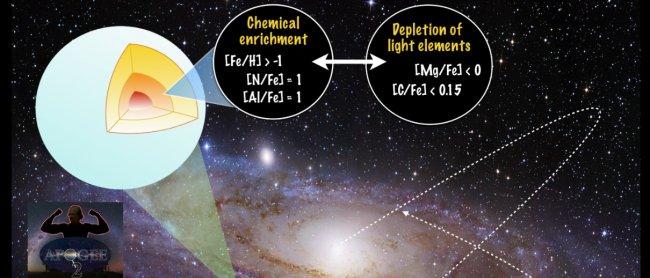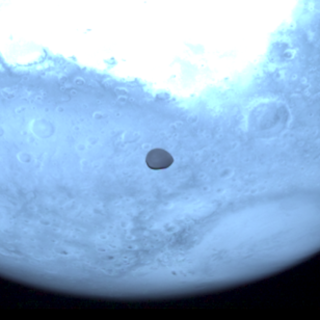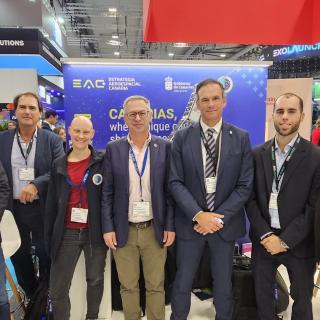In Science, serendipity is a source of surprising discoveries. It opens your eyes to the unknown. Sometimes, it even changes the course of a research, a theory or a paradigm completely, what has happened in this discovery. A group of astronomers was on the lookout for fossil relics of early Milky Way when they came across an exciting accidental discovery: they found compelling evidence for a new family of giant stars with an unusual chemical pattern for stellar nucleosynthesis observed to date. These stars, are not only different in chemical composition respect the Milky Way population but also in their orbital properties, suggesting that they may have an extragalactic origin. The details of this discovery, in which researchers of the IAC have participated, have been published in the specialized Journal The Astrophysical Journal Letters.
"This is extremely interesting because only the extragalactic stellar clusters contain stars with chemical patterns remarkably similar to the new stellar population discovered, which suggests a possible association", says Olga Zamora, Support Astronomer at the Canary Islands Observatories and postdoc at the IAC that leaded the research, together with J. G. Fernández-Trincado, researcher at the Universidad de Concepción (Chile).
The team used data from the second phase of the Apache Point Observatory Galactic Evolution Experiment (APOGEE-2), which is typically used to map the chemical elements in the star across de Milky Way (carbon, oxigen, nitrogen, aluminium, among others), by observing the chemical composition of around 150,000 giant star atmospheres in the H-band through the APOGEE instrument, with the ability of penetrating dust obscuration.
The newly discovered population is very deficient in magnesium. This is unexpected considering their high levels of nitrogen, aluminum and iron. “They could be formed from disrupted globular clusters, but this peculiar distribution of elements is not observed in any present-day galactic globular cluster with similar chemical properties”, explains Aníbal García-Hernández, a researcher a the IAC and one of the authors of the paper.
"These stars may be born in a globular cluster with a distinctive history of formation and then unbound from it. If they formed from a gas previously polluted by a specific combination of massive (around 30 times the solar mass) and less massive stars (4 to 8 solar masses), this could explain their unusual chemistry", adds the IAC postdoc Flavia Dell’Agli, who co-authored the work.
It makes these anomalous stars the ideal candidates for a living fossil from the early days of the Milky Way or even the fossil relics of disrupted extragalactic globular clusters possibly by tidal forces due to the gravitational pull of the Milky Way.
The team now plans to use this newly discovered stars to better understanding of nucleosynthesis and stellar evolution, as well as to look for more chemically atypical galactic giant stars,a fundamental step forward to understanding the formation and evolution of our own galaxy.
Article:“Atypical Mg-poor Milky Way field stars with globular cluster second-generation-like chemical patterns”, by J. G., Fernández-Trincado, O. Zamora, D. A. García-Hernández, D. Souto, F. Dell'Agli et al. 2017, ApJL, 846, L2. DOI: 10.3847/2041-8213/aa8032
Enlace: http://iopscience.iop.org/article/10.3847/2041-8213/aa8032/meta
Contacto:
Olga Zamora: ozamora [at] iac.es y 922605502



